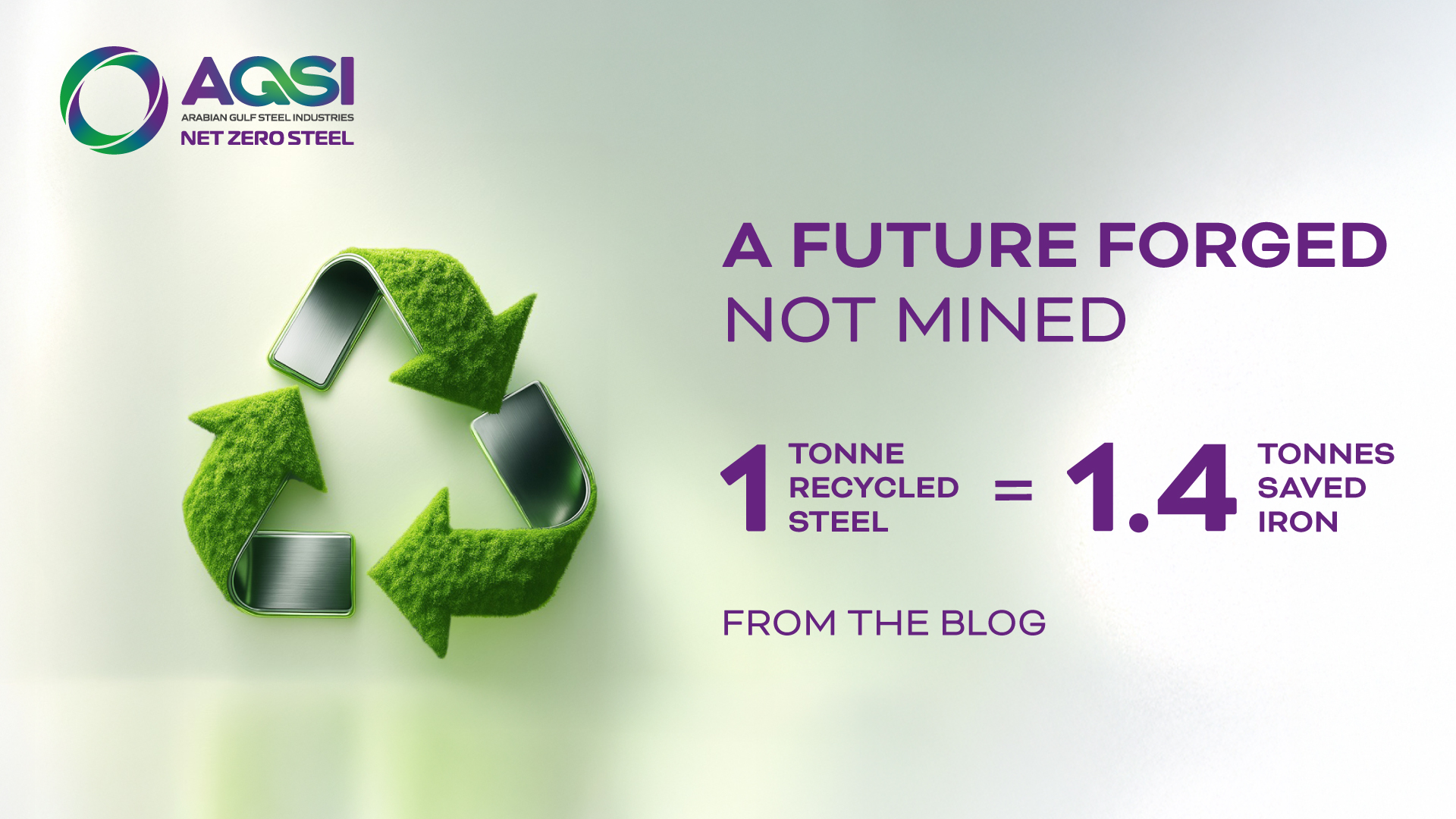The steel industry is at an important point in its history. Steelmaking has traditionally leaned heavily on virgin iron ore and fossil fuel-based processes and has long been seen as detrimental to environment due to its high greenhouse-gas emissions and depletion of natural resources (World Steel Association, 2023; Norgate and Rankin, 2002). However, forward-looking players like Arabian Gulf Steel Industries (AGSI) are leading the way in demonstrating that sustainability and industrial excellence can cohabitate, with operations powered by renewable energy and production relying entirely on raw material feedstock, enabling the company to avoid both harmful emissions and depletion of finite natural resources.
Resource Conservation in Steelmaking
Let’s break this down. Mining of virgin iron ore is both highly intensive in energy while it also depletes Earth’s non-renewable geological reserves. Norgate and Haque (2010) found that the mining and processing of iron ore has a substantial contribution to abiotic resource depletion – one of the key environmental indicators monitored and tracked through Life Cycle Assessments (LCA). While a known consequence of the use of virgin minerals, this indicator is especially underscored when the processes are powered by fossil-based energy, further compromising the Earth’s global environmental systems.
Where does AGSI stand?
The trail of data leads to AGSI, an example of circular steelmaking, sourcing 100% of its raw materials from raw materials feedstock and thus, a relevant recycling player in the countries where it produces its steel. By relying exclusively on recycled raw materials, AGSI does not need to extract primary ore, thus directly reducing the 1.4 tonnes of iron ore saved per tonne of steel produced (Norgate and Rankin, 2002; Norgate and Haque, 2010).
Yet its dedication to environmental stewardship is not limited to raw materials. AGSI also reports powering its operations with renewable energy, reporting carbon neutrality for Scope 1 and 2 emissions. While metrics of abiotic resource depletion in Life Cycle Assessments (LCAs), typically focus on non-renewable raw materials such as iron ore and bauxite (Norgate and Rankin, 2002; Sonnemann et al., 2006), AGSI’s strategy reducing the reliance on fossil fuels, provides additional sustainability benefits. By operating mostly using clean energy sources, the company reduces its dependence on coal and natural gas, both finite energy resources traditionally used in conventional blast furnace-based steelmaking (IEA, 2023).
A Low-Impacted Future
This dual approach – using recycled raw materials to make steel and utilizing renewable energy – is proving to be an effective low-impact model of operation. On one side, scrap-based steelmaking conserves material inputs that would otherwise require virgin ore while on the other, renewable energy reduces environmental burdens resulting from energy use. This can serve as a model approach illustrating, through a positive environmental lens, how steelmaking can evolve to meet today’s environmental expectations while maintaining similar outputs.
References
-
Norgate, T. and Haque, N. (2010). The environmental profile of the production of rare earths and niobium. Journal of Cleaner Production, 18(14), pp. 1355–1363. Available at: https://www.sciencedirect.com/science/article/abs/pii/S0959652610003483 [Accessed July 2025].
-
Norgate, T.E. and Rankin, W.J. (2002). The role of metals in sustainable development. In: Green Processing 2002. Australasian Institute of Mining and Metallurgy, pp. 133–140.
-
International Energy Agency (IEA) (2023). Iron and Steel – Tracking Clean Energy Progress. Available at: https://www.iea.org/reports/iron-and-steel [Accessed July 2025].
-
Sonnemann, G., Gemechu, E.D. and Adibi, N. (2006). Abiotic depletion potential (ADP) of elements revisited – recommendations for application in LCA. International Journal of Life Cycle Assessment, 11(1), pp. 13–16.
-
ResearchGate (2002). The steel industry, abiotic resource depletion, and life cycle assessment. Available at: https://www.researchgate.net/publication/223840380 [Accessed July 2025].


